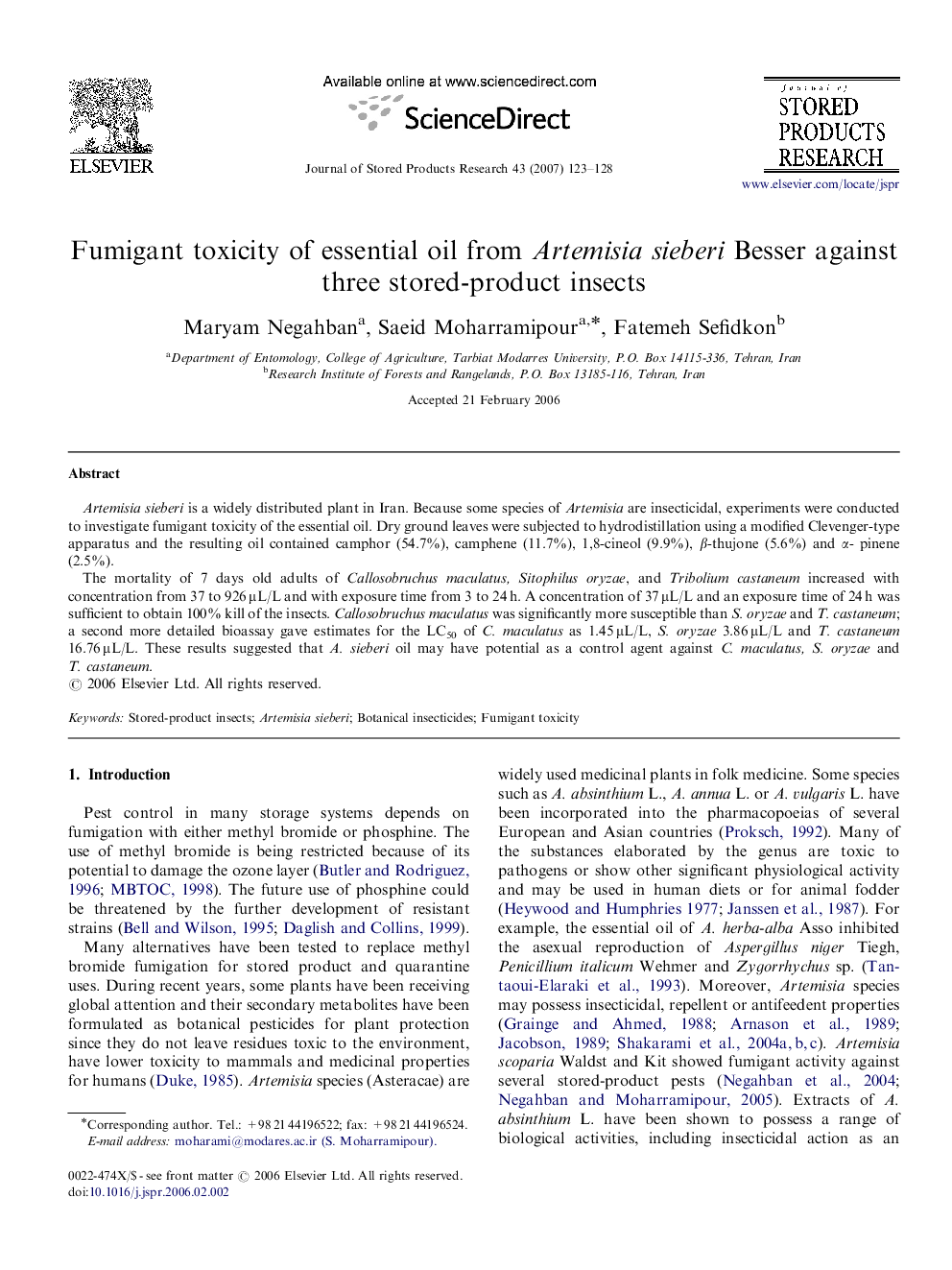| Article ID | Journal | Published Year | Pages | File Type |
|---|---|---|---|---|
| 4517572 | Journal of Stored Products Research | 2007 | 6 Pages |
Artemisia sieberi is a widely distributed plant in Iran. Because some species of Artemisia are insecticidal, experiments were conducted to investigate fumigant toxicity of the essential oil. Dry ground leaves were subjected to hydrodistillation using a modified Clevenger-type apparatus and the resulting oil contained camphor (54.7%), camphene (11.7%), 1,8-cineol (9.9%), β-thujone (5.6%) and α- pinene (2.5%).The mortality of 7 days old adults of Callosobruchus maculatus, Sitophilus oryzae, and Tribolium castaneum increased with concentration from 37 to 926 μL/L and with exposure time from 3 to 24 h. A concentration of 37 μL/L and an exposure time of 24 h was sufficient to obtain 100% kill of the insects. Callosobruchus maculatus was significantly more susceptible than S. oryzae and T. castaneum; a second more detailed bioassay gave estimates for the LC50 of C. maculatus as 1.45 μL/L, S. oryzae 3.86 μL/L and T. castaneum 16.76 μL/L. These results suggested that A. sieberi oil may have potential as a control agent against C. maculatus, S. oryzae and T. castaneum.
